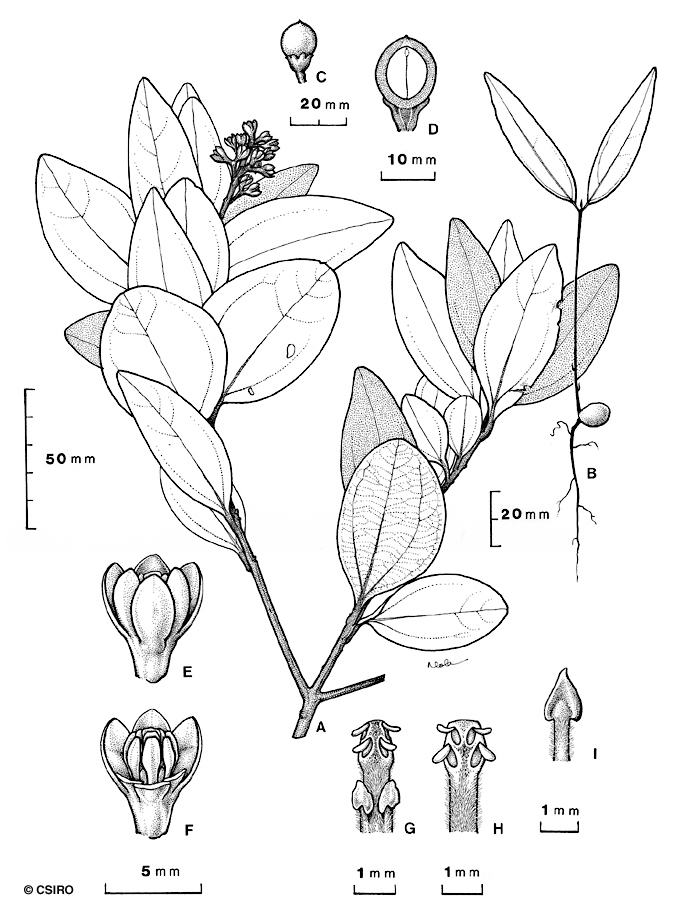Australian Tropical Rainforest Plants - Online edition
Cinnamomum propinquum F.M.Bailey




Bailey, F.M. (1901) The Queensland Flora 4: 1309. Type: Summit of Bellenden-Ker, Expd. 1889, leaf specimens; Mount Bartle-Frere, Stephen Johnstone, (F.v.M.), flowering specimens ..
Pepperwood
Strong peppery odour in the blaze. Lenticels in longitudinal lines. White granular stripes in the outer blaze.
Freshly broken twigs have a peppery odour. Twigs 4-angled when young but terete when older, clothed in straight, white or pale brown hairs when young, but glabrous when older. Leaf blades about 5-9.5 x 2-3.5 cm, thick and leathery, slightly glaucous on the underside, clothed in straight, white or pale brown appressed hairs when young but eventually becoming almost glabrous. Midrib raised on the upper surface. Petioles flat or channelled on the upper surface. Oil dots visible with a lens.
Tepals about 3.5-5 mm long. Stamens nine (six opening inwards and three opening outwards). Staminodes three.
Fruiting receptacle or cupule obviously lobed at the apex. Fruits about 13.5 x 11.5 mm when ripe.
At the tenth leaf stage: leaf blade leathery, penninerved and slightly triplinerved, glaucous on the underside; oil dots small, visible with a lens; terminal bud almost white because of hairs. Seed germination time 22 days.
This species does not grow large enough to produce millable logs. Wood specific gravity 0.85. Hyland (1989).





